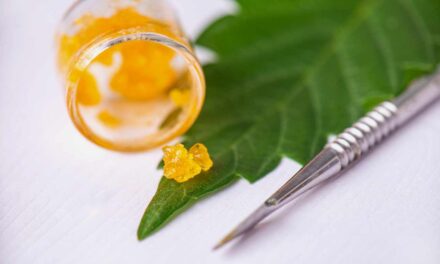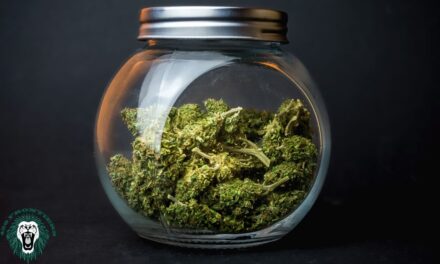Despite its significance, growing cannabis is no different from growing a normal plant. This means that there is a wide range of cannabis leaf problems that you might run into.
If you don’t take action right away, this might kill your entire crop. There are specific leaf problems that even experienced growers could miss.
You must have a complete idea about the diseases that your cannabis crop could have. And most importantly, you are good at spotting the problem at its early stages when it is still treatable.
You must keep a constant watch at the leaves of your crop as they reflect the plant’s overall health.
Table of Contents
Nutrient Overload
There is a reason for this problem to get listed at the top and not somewhere in between. When you see your cannabis leaves turning yellow, this is exactly what you should check first.
The most common mistake that any beginner would make is over-feeding their crops. There are two things that you must be doing that’s causing a nutrient burn.
You must be feeding your crop with nutrients that are too strong or feeding them too often. Nutrient burn is a severe marijuana leaf problem that makes your buds taste like chemicals when you harvest them.
You must stop feeding your crop with nutrients for the next or two weeks and heal itself. This will help them have a natural recovery. Try using a lighter nutrient mix and make sure you use the right amount.
Heat Burn
Heat burn or heat stress is another common cannabis leaf problem that might occur if you grow your crops in a tropical environment.
Dry and withering leaf tips that start curling upwards is the most common indicator of heat stress.
If you plan on having a succulent harvest, your crops must grow at a temperature of 21-24 degrees Celsius at the day and 10-16 degrees Celsius at night.
You can diagnose heat stress when you start seeing new buds growing over the old ones. This means that your crop is trying to get rid of the bud that’s dying.
You can get rid of heat stress by simply adjusting your plant’s position and moving it away from the light source.
Try reducing the temperature in the room to prevent heat stress and keep your plant healthy.
Increased Light Exposure
Light burn is again a most common pot plant problem that beginners tend to run into. Your cannabis plant should never get over-exposed to a light source.
It turns the bright green color of your leaves into pale yellow on the side where your light source is. Your leaves also tend to curl upward, pointing towards the source of light.
But there is nothing much to worry about as it does not have any long-lasting effect on your plant.
To solve this, you can increase the distance between your crop and the light source or replace it with a low-intensity light bulb.
Saggy leaves
Over-watering is something you must never do to your cannabis crop. If you see your leaves drop down and saggy, you feed it more water than it needs.
Even if you are not over-watering, you might be watering it too often, which is technically the same. Just like the light burn, fixing this cannabis leaf problem is also an easy task that doesn’t need any additional products.
All you have to do is to let your crop rest and increase the duration between your watering cycle.
Before watering your crop, you have to make sure that the soil is dry for at least an inch. The container or pot in which you are growing your crops should have holes through which excess water can drain away.
Nutrient Deficiency, Identification & Remedies
Humans face numerous health risks caused by nutrient imbalances, and plants are no different. Crops need a lot of different nutrients in the right proportions to function properly.
Deviating from these levels could prove detrimental to your cannabis crops and might completely ruin your harvest.
Unlike heat stress and light burn, you won’t be able to reverse the damages caused by nutrient deficiencies unless you find the problem early.
1. Nitrogen
You don’t have to worry about nitrogen deficiency if it only turns up during the late flowering phase. But if you notice the bottom of your leaves turning yellow at the early stage of flowering, you have to find a fix.
Cannabis consists mostly of nitrogen, which means that nitrogen is essential in determining the growth of your crop. If the yellow pigmentation from the bottom of the leaves starts traveling upward towards the tip, it is time for you to hurry up. To rejuvenate your plant with nitrogen as quickly as possible, try using water-soluble nitrogen fertilizers.
This makes it easier for your roots to absorb the content and direct it to the leaves, helping them return to their bright green color.
2. Potassium
You can identify this cannabis leaf problem when you find rusty spots at your leaf tips and edges. Potassium aids in a crop’s ability to transport water, which makes potassium deficiency pretty obvious.
This will make your buds look small and dry when you harvest. This deficiency arises when your growing medium has an excess amount of calcium and nitrogen in it.
It makes your job of finding the right solution a lot more complicated. You have to do two things at once. Reducing the amount of nitrogen and calcium is your priority.
If this doesn’t fix the problem, you have to find a supplement that’s only rich in potassium. Potassium Bicarbonate and liquified kelp are some of the most sought after choices.
3. Magnesium
As marijuana leaf problems come and go, this a much common one. If you find your leaves becoming pale and yellow while the veins are getting darker, your crop has a magnesium deficiency.
If you don’t fix this, your entire leaf goes dark and eventually dries. Seeing brown spots on your lower leaves is also a standard indicator before they fall off and die.
You can solve this by mixing some Epsom salt or magnesium sulfate when you water your plant.
If you don’t want this problem to reoccur, you have to flush your plant with ph6 water and use supplements to address this issue directly.
4. Phosphorus
Phosphorus deficiency in a cannabis crop is so rare, but there is nothing wrong with staying prepared.
It affects your crop in its early stages, causing it to have weaker roots and small leaves. It also reduces the vigor or quality of your cannabis leaves.
Purplish pigments on the stem and brown lining along the edges of your leaf, causing them to fold downwards, are other standard identifiers. In its final stages, it affects the entire leaf forcing it to self-destruct.
This deficiency needs a fix at its early stage to recover your crop and regain its vigor.
5. Zinc
If your cannabis leaves are growing thinner and smaller by the day with yellow veins in between, zinc deficiency might be its cause. Zinc helps your plant to adapt, survive, and grow in cold temperatures.
It also aids in a crop’s energy cycle by converting carbohydrates to sugar. Zinc deficiency will most probably go away in its own time, but it is better not to risk it.
If your crop is just starting to flower, you must take this situation a lot more seriously. To fix this, dry your crop out and then use pH neutral water to flush it.
Make sure that it has a pH range of 6.0 to 6.5. You can use tap water, which is naturally rich in zinc.
6. Iron
In case of an iron deficiency, your cannabis leaves will have normal green veins but yellow and pale looking leaves.
This not only reduces the growth rate of your plant but also affects the size of the buds. If left untreated, your leaves will start developing dry tips that would eventually die.
You have to act immediately and increase the amount of iron present in your crop’s system. Higher pH is the most common cause of iron deficiency in your pot plant.
Neutralizing it should solve almost all the symptoms. If you plan on using supplements, remember that iron might react with other elements causing a whole set of other problems.
Threats From Insects
Apart from deficiencies and other common mistakes that you might make, there are many cannabis leaf problems caused by insects.
Although it is pretty easy to get rid of them, most damage is already done when you identify the problem.
1. Fungus Gnats
Fungus Gnats is a widespread pot plant problem. These insects usually fly around the crops, land on their leaves, and lay eggs in the wet soil where the crop is growing.
Each of these tiny pests is capable of laying over 200 eggs every 7 days, and they usually target the lower part of the plant affecting water and mineral absorption.
The early you spot them, the easier it is to kill and get rid of them. Placing a sticky yellow paper would trap all the insects. You can also use apple cider vinegar with the dishwasher to have the same effect.
2. Spider Mites
Spider mite infestation is a sporadic marijuana leaf problem, but it’s also the most damaging. They are too hard to get rid of unless you can find them at their early stage.
Cannabis has several fan-shaped leaves under which these pests could comfortably survive. You can find tiny bulged dots on the bottom of your leaves, which eventually hatch and mature.
Most people use live ladybugs to fix this issue, which is a cheap option. The reproductive rate of these pests is so high; hence you must get rid of every last one of them without which they will keep multiplying again no matter how much you kill.
3. Aphids
Aphids are the most common pests found on a cannabis plant, and they come in a lot of different shapes and colors depending on their stage of life.
You can use insecticides that affect the nervous system directly to kill them. You must check your crops at least once every week to spot them in their early stages of infestation.
While using insecticides, never get anywhere close to your buds as it may contaminate them and make them taste different.
Using natural products like neem oil will help you reduce the risk of contaminating your cannabis buds’ quality.
4. Crickets
Crickets eat your cannabis leaves and make holes in them. This is not a pest that’s specific to a cannabis crop as it is a common insect found affecting almost all green plants.
These ugly looking creatures could also bite your roots and make them weak. They get attracted to light; therefore, you should avoid leaving the lights on during the night.
Apart from the crop, they feed on the garbage that surrounds them. Therefore you must clear the site of any excess dried leaf litter and other plant wastes.
Try using sticky cricket traps which work the best instead of using chemicals and damaging the quality of your buds. Make sure you get rid of them before they grow huge in numbers.
Conclusion
You need to know that your cannabis crop could get exposed to diseases at any stage in its lifetime.
Most of these problems are solvable, provided that you identify the problem in its early stages. Your plants could sustain significant damage if you fail to do so.
Cannabis is a sturdy crop, but survival is not your goal, but the quality is. Having a basic idea about where to look for problems and how to solve them could make all the difference in the world.





